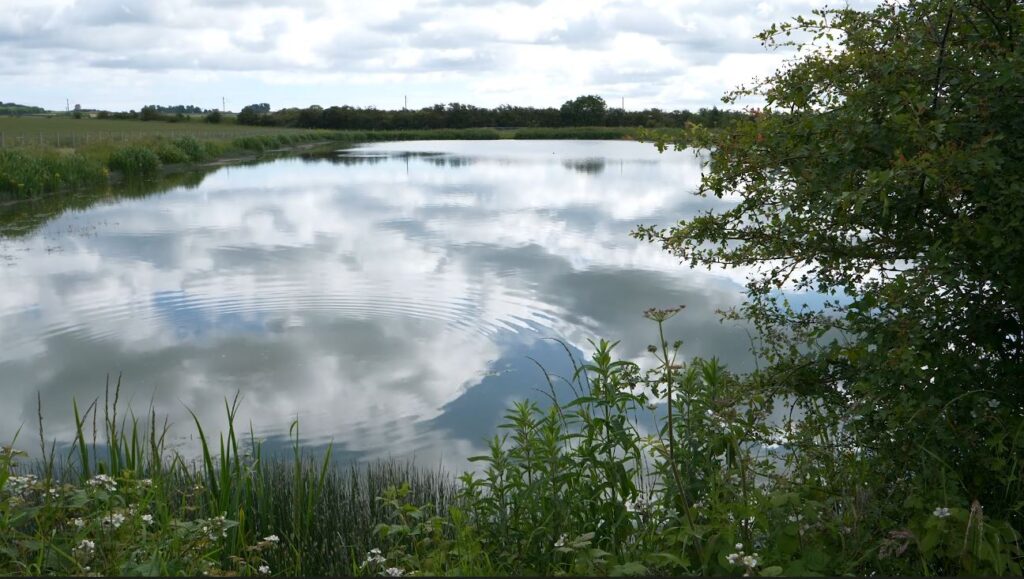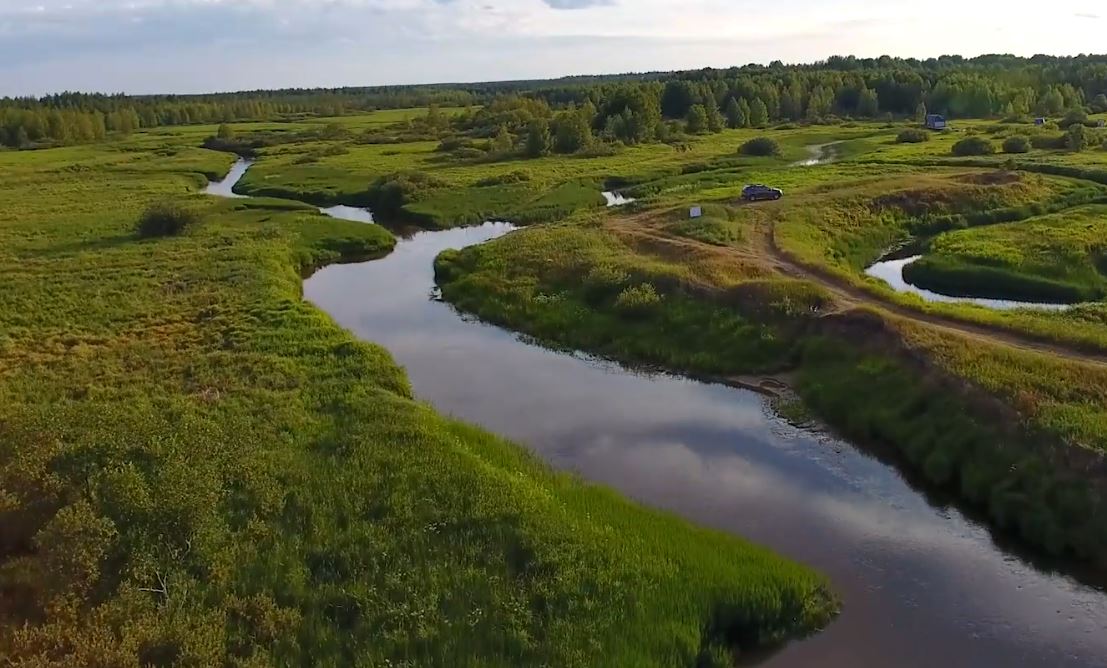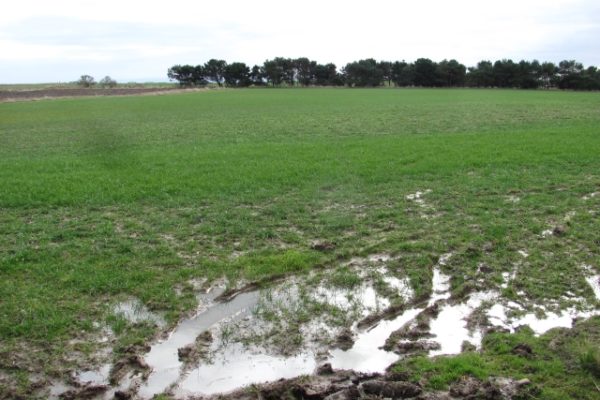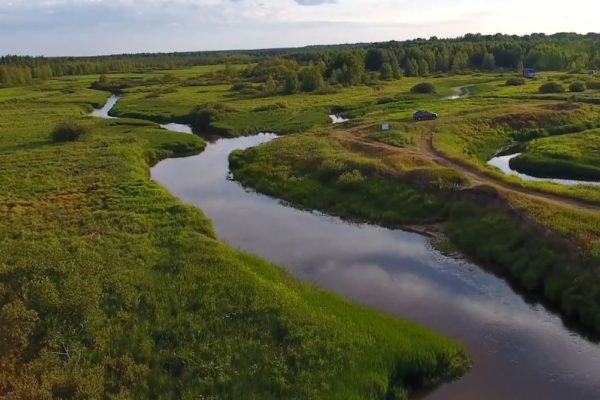Using Technology to Defend Against Water Scarcity in Scotland
4 July 2024Water scarcity poses a significant challenge to the agricultural sector, particularly in regions where water resources are limited. In the context of English agriculture, where rainfall patterns can be unpredictable and water availability can be a concern, combatting water scarcity is of utmost importance, as it can have severe consequences, affecting crop yields, livestock health, and overall food security. This necessitates the adoption of innovative technologies that can help mitigate the impact of water scarcity and ensure the sustainability of agriculture. As the risk of water scarcity increases in some areas of Scotland through the summer, this guide will take you through some of the technologies being used on English farms with the intention of helping make your business, and Scottish agriculture as a whole, more resilient.

Precision Irrigation
Precision irrigation (sometimes called smart irrigation) optimises water usage in agriculture by delivering the right amount of water to crops based on their individual needs. This technology utilises sensors, data analytics, and automation to determine the precise water requirements of each plant, reducing water wastage significantly. By implementing precision irrigation systems, crop yields can be increased while conserving water resources.
Smart irrigation systems are designed to improve water efficiency by delivering water at the right time based on factors such as weather conditions, soil moisture levels, and crop water requirements. These systems incorporate real-time data and automation to adjust irrigation practices accordingly, minimising water loss and maximising water efficiency. This ensures that crops receive adequate irrigation without overwatering or wasting water.
Precision irrigation systems utilise sensors and data analytics to determine the water needs of each plant or crop zone. By monitoring soil moisture levels and weather conditions, these systems can deliver water only where and when it is needed, reducing water usage. This precision watering approach targets water directly to the root zone of the plants, avoiding unnecessary irrigation.
Furthermore, precision irrigation systems use weather data to optimise irrigation schedules and amounts. By considering factors such as rainfall, temperature, humidity, and evapotranspiration rates, these systems can align irrigation with natural water availability, reducing reliance on manual intervention and excessive water application.
Smart irrigation systems also offer remote monitoring and control features, allowing farmers to manage irrigation operations from a central location or through mobile devices. This enables real-time monitoring of soil moisture levels, irrigation schedules, and water usage, empowering farmers to make informed decisions and prevent water wastage. The data generated by these systems on water usage, soil moisture levels, and crop water requirements enables data-driven decision making, optimising water usage, improving crop yield, and maximising resource efficiency.
Moreover, smart irrigation systems contribute to water conservation by detecting leaks or abnormalities in the irrigation system and alerting farmers to prevent further water wastage. Some systems can integrate rainwater harvesting and reuse systems, reducing reliance on freshwater sources.
Drip Irrigation
Drip irrigation is a water-efficient technique that delivers water directly to the roots of plants in small, controlled amounts. It involves the use of narrow tubes or emitters that release water slowly and evenly along the planting rows. This method eliminates water loss due to evaporation or runoff, ensuring that water is used efficiently.
Compared to traditional irrigation methods, such as sprinklers and rain guns, drip irrigation reduces water usage by up to 60% (Anjum et. al., 2023). This is because water is directly targeted to the plants' root zones, avoiding unnecessary watering of surrounding areas.
Moreover, drip irrigation allows for precise control over the amount of water delivered to each plant. By using sensors and automation, farmers can adjust irrigation schedules and amounts based on factors such as soil moisture levels and crop water requirements. This ensures that water is used only when and where it is needed, reducing water loss and maximising water efficiency.
Additionally, drip irrigation in most cases reduces soil erosion, applying water slowly and evenly to the soil surface, allowing it to penetrate the soil gradually. This helps to prevent soil erosion, as the water is absorbed more effectively, reducing the risk of runoff and soil loss. Conserved soil moisture also promotes healthier plant growth and reduces the need for additional irrigation.
Fertigation
Fertigation is a technique that combines irrigation and fertilisation by delivering nutrients directly to plants through the irrigation system. It involves mixing water-soluble fertilisers with irrigation water and applying the mixture to crops.
Fertigation helps combat water scarcity in English agriculture in the following ways:
- Efficient Nutrient Delivery: By incorporating fertilisers into the irrigation water, plants receive nutrients in a more targeted and efficient manner. This reduces the amount of fertiliser needed, minimising the overall water requirement for irrigation.
- Reduced Nutrient Loss: Fertigation allows for precise control over nutrient application, ensuring that fertilisers are delivered directly to the root zone of plants. This minimises nutrient leaching and runoff, preventing the loss of valuable nutrients and reducing water pollution.
- Improved Crop Health and Yield: With fertigation, crops receive a continuous supply of nutrients throughout the irrigation cycle. This promotes optimal plant growth, development, and yield, maximising crop productivity.
- Water Conservation: Fertigation enables farmers to make the most of limited water resources by combining irrigation and fertilisation. The technique ensures that plants receive both water and nutrients simultaneously, reducing the need for separate irrigation and fertilisation applications.
By adopting fertigation practices, English farmers can improve nutrient management, enhance crop productivity, and conserve water resources.
Hydroponics
Another innovative technology that can combat water scarcity in English agriculture is hydroponics. Hydroponics is a soilless cultivation method that involves growing plants in nutrient-rich water solutions. This technique allows for the precise control of water usage, as the plants receive water directly to their roots, minimising wastage. Additionally, hydroponics systems can be designed to recycle and reuse water, further reducing the strain on water resources.
Hydroponic farming is a method of agriculture that involves growing plants without soil, using a nutrient-rich water solution instead. This innovative approach offers several benefits that make it a suitable and sustainable option for modern agriculture.
One of the key advantages of hydroponic farming is its efficient use of water. Compared to conventional farming methods, hydroponics requires only a fraction of the water. This is particularly important in areas facing water scarcity, as it helps to conserve this valuable resource.
In addition to water efficiency, hydroponic systems also provide optimal nutrient delivery to plants. By directly supplying nutrients to the roots through the water solution, plants can access the exact nutrients they need for healthy growth. This results in faster growth rates and higher yields compared to traditional farming methods.
Another advantage of hydroponics is the elimination of soil. This eliminates the risk of soil-borne diseases and pests, reducing the need for pesticides and fungicides. It also allows for precise control over the nutrient composition, ensuring that plants receive the right balance of nutrients for optimal growth.
Hydroponic farming can be implemented in small spaces, making it ideal for urban farming and maximising land usage. Vertical farming, for example, involves growing plants in stacked layers, allowing for higher yields in a limited area. This makes hydroponics a viable option for areas with limited land availability.
Ongoing advancements in technology, research, and commercial-scale operations are expanding the possibilities of hydroponics. Innovations such as aquaponics, which combines hydroponics with fish farming, and controlled environment agriculture, which involves precise control over temperature and humidity, are further enhancing the potential of hydroponic farming.
Overall, hydroponic farming offers numerous benefits, including efficient water usage, higher yields, precise nutrient control, and the ability to maximise land usage.

Crop Varieties and Rotation
In addition to these technologies, the integration of water-efficient crop varieties and agricultural practices can further contribute to combatting water scarcity. The development of drought-tolerant crop varieties and the adoption of conservation agriculture techniques, such as mulching and cover cropping, can reduce water demand while maintaining crop productivity. These practices promote soil health and water retention, enabling crops to withstand periods of water scarcity.
Different crop varieties have varying water requirements and tolerances. By choosing crop varieties that are more drought-tolerant or have lower water requirements, farmers can reduce the amount of water needed for irrigation. This allows for more efficient use of water resources, especially in regions prone to water scarcity. Additionally, selecting crop varieties with deep root systems can help plants access water from deeper soil layers, reducing dependence on surface water sources.
The British Beet Research Organisation (2021), are currently researching the existing drought tolerance in UK sugar beet varieties. In the coming years with drier summers, yield and area losses will become more frequent and where irrigation is not a feasible option for growers, they can look to optimising the use of varieties for additional yield in optimal and dry conditions. Varieties need to be able yield well across a range of moisture deficits, as the climate is still unpredictable and even with the warmer drier summers forecast there will be years where rainfall is sufficient for the crop to maximise yield.
Evidence currently highlights that, genotypic differences in drought tolerance are evident in sugar beet breeding lines and commercial varieties developed for the UK market. It is also identified that drought tolerance varieties are not synonymous with reduced yield potential. Commercial variety Roberta has shown a greater drought tolerance than the other commercial varieties examined, suggesting that there will be variation in drought tolerance in the current recommended list varieties which is why examining them is worthwhile.
Crop rotations are another important technique that helps conserve water in agricultural practices. By rotating crops, farmers can break the cycle of pests and diseases, reducing the need for chemical inputs and water-intensive treatments. Certain crops, such as legumes, can fix nitrogen in the soil, reducing the need for synthetic fertilisers that require water for application. Crop rotations also help improve soil structure and water-holding capacity, allowing for better water infiltration and retention.
Furthermore, incorporating cover crops in rotation can enhance water conservation. Cover crops help reduce evaporation, control soil erosion, and retain soil moisture. They also increase organic matter content, enhancing water-holding capacity and improving soil structure.
Conclusion
Combatting water scarcity in agriculture is of utmost importance to ensure the long-term viability of the sector. Innovative technologies, such as precision irrigation, hydroponics, and precision and drip irrigation systems, offer sustainable and efficient solutions to optimise water usage. By integrating these technologies with water-efficient crop varieties and alternative rotations, English agriculture is mitigating the impact of water scarcity and ensuring food security and environmental sustainability. Information on some of these approaches and technology could be useful for many Scottish farms as the weather pattern changes. The adoption of innovative technologies and practices is essential to combat water scarcity and secure a prosperous future for UK agriculture.
Abigail Teward, SAC Consulting
References
Baruah, et. al., 2024. Precision irrigation management: a step toward sustainable agriculture - ScienceDirect
Anjum et. al., 2023. Chapter 6 - Precision irrigation: challenges and opportunities. Precision irrigation: challenges and opportunities - ScienceDirect
BBRO, 2021. Current: Assessing drought tolerance in UK sugar beet varieties - BBRO
Sign up to the FAS newsletter
Receive updates on news, events and publications from Scotland’s Farm Advisory Service











